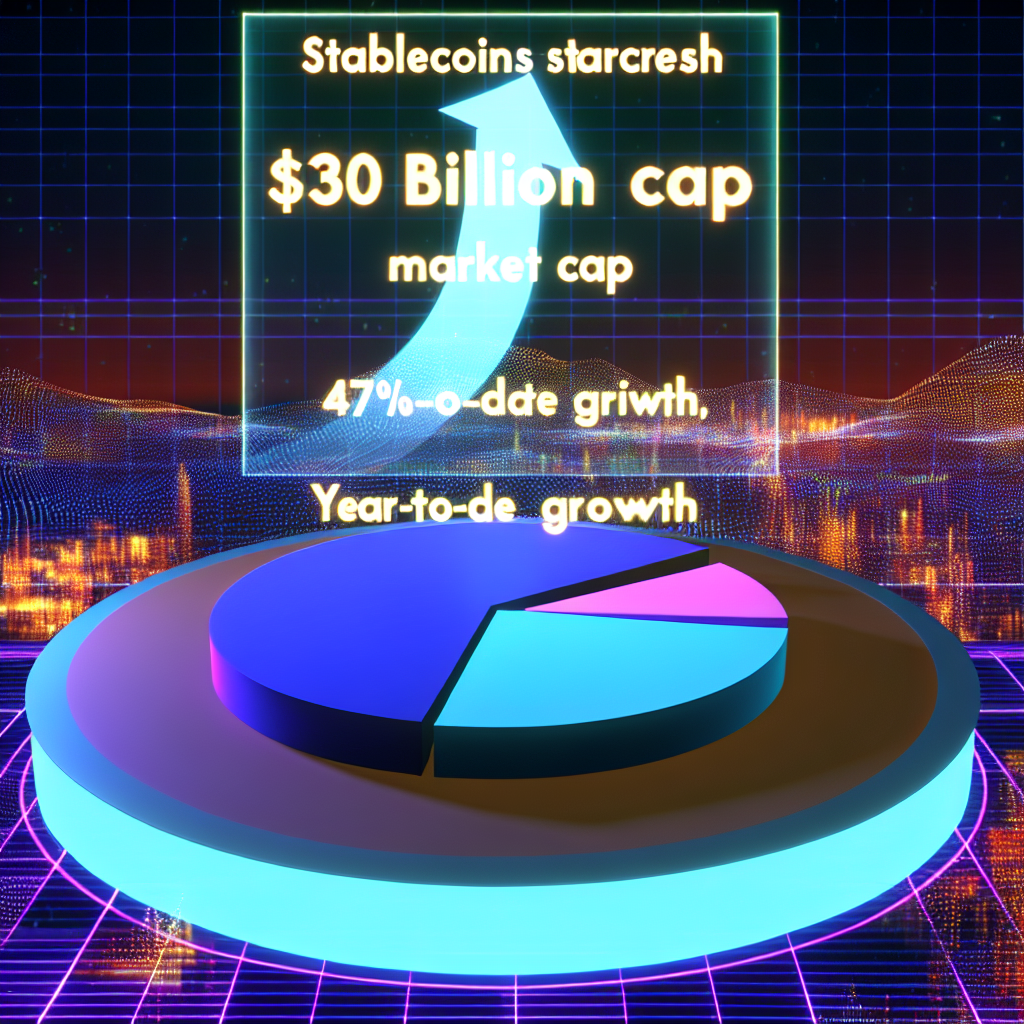Stablecoins—cryptocurrencies linked to the value of fiat currencies or commodities—have exceeded $300 billion in market capitalization for the first time, indicating a notable trend in adoption.
As reported by open-source aggregator DefiLlama, this milestone was achieved on Oct. 3, 2025, marking a year-to-date growth of 46.8%.
With the stablecoin market crossing the $300 billion mark, it is well-positioned to keep up its pace in 2024 amid growing competition and a surge of new stablecoin launches this year.
“The milestone serves as a reminder that the infrastructure developed today must scale to trillions, as that’s where the market is headed,” said USDT0 co-founder Lorenzo R to Cointelegraph.
A $23 billion gap to replicate last year’s growth
To replicate last year’s growth of 58%, stablecoins must add an additional $23 billion by year-end. After seeing $40 billion added in the third quarter alone, analysts suggest the market is on pace to achieve this.
The 58% increase would not set a historical record; the stablecoin market cap surged by 876% in 2019, climbing from around $400 million to $4.1 billion within a year.
The boom persisted through the pandemic, with the market expanding by 568% in 2020 and 494% in 2021, before facing its first significant contractions in 2022 and 2023.
Ethena’s USDe and Solana among the biggest winners
As previously reported by Cointelegraph, stablecoin growth in 2025 has been primarily driven by Tether USDt (USDT), Circle’s USDC (USDC), and Ethena Labs’ yield-bearing stablecoin USDe (USDE).
Although USDT and USDC dominate stablecoin inflows and market cap, Ethena’s USDe experienced the largest spike in market share, soaring more than 150% from approximately $6 billion in January to nearly $15 billion by October, according to data from RWA.xyz.
On a network level, Ethereum continues to lead the stablecoin sector with a circulating stablecoin supply of $171 billion.
Related: Race for global stablecoin rails heats up with Stripe, Fireblocks launches
However, stablecoins on Ethereum have grown by approximately 44% in 2025, whereas Solana-based stablecoins have surged nearly 70% from $4.8 billion to $13.7 billion.
Arbitrum and Aptos have also seen significant growth, with stablecoin circulation supply increasing by about 70% and 96%, respectively.
Anticipation of mainstream adoption
EarnOS founder Phil George stated that while the $300 billion stablecoin milestone is notable, the trend toward adoption is more critical.
“Supply has doubled in two years and is likely to double again within a year,” George mentioned, noting that major financial platforms such as Stripe, Circle, and Tether are planning their own layer-1 (L1) blockchains, and PayPal is already issuing its own stablecoin.
“I anticipate $100 trillion in transaction volume next year and would love to see the supply double again to $600 billion,” he told Cointelegraph, expressing optimism for additional stablecoin launches by payment giants like Visa.
Related: All currencies will be stablecoins by 2030: Tether co-founder
Aryan Sheikhalian, head of research at CMT Digital, echoed George’s sentiments, stating that while the $300 billion milestone signifies maturity, even more substantial thresholds are likely to emerge.
Sheikhalian posited that $500 billion would denote mainstream integration, with $1 trillion probable by the end of the decade as stablecoins infiltrate corporate treasuries and consumer payments.
“Longer term, if corporations like Amazon or Walmart issue their own tokens or adopt stablecoins at checkout, that’s when the rails of consumer finance will have fundamentally shifted.”
Magazine: Japan tours on XRP Ledger, USDC and USDT payments via Grab: Asia Express

